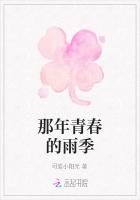We use many varieties of vegetable substances as food. The principal are the grains-wheats, oats, barley, rice, and corn; the preparations known as sago, arrowroot, and tapioca; the seeds of beans and peas; fresh vegetables, such as are sold by the green-grocer; fruits, and sugar in various forms.
First among the vegetable foods stand those which yield flour or meal. We call them farinaceous foods, from farina, the Latin name for flour. These foods shall form the subject of our first inquiries.
"Now, Fred," said Mr. Wilson, "you pleased me the other day very much by showing me that you had not forgotten the way to separate the starch grains from flour. You shall now come to the front and do it for me, as you have seen me do it in our earlier lessons. That will do; the water in the basin is white and milky with the starch. Now open the bag, and let us see what we have left behind in it. There is a white, sticky substance something like bird-lime left in thebag. We call it gluten. This gluten is very much the samekind of substance as the albumen, myosin, gelatine, and casein of animal food. It is a tissue-forming substance.
"The flour, you see, consists mainly of these two constituents, gluten and starch. The starch is now in the water; the gluten in the muslin bag.
"Here are some grains of wheat. Let us cut them open and examine them. The middle of the grain, you observe, iswhite, and this white part is enclosed within an outer covering or skin. The white inner substance is starch; it is the outer covering of the grain which contains the tissue- forming gluten. The gluten is always found in this outer part of the grain, just beneath the skin.
"The miller, after grinding the grain, passes the meal through a series of sieves. The first sieve separates the larger particles from the rest. These are really portions of this very outside skin, and are sold as bran. The second sifting separates some finer portions of the same skin, which are known as middling. The brown meal, which remains after this sifting, is really the best and most nourishing of all, for it contains all the gluten. It makes good, wholesome, brown bread.
"Many people, however, prefer white bread; hence the meal is sifted again and again, the result being that much of the gluten is separated from it, and the flour is white only because it consists very largely of starch.
"You will now understand that although the miller may call this best wheaten flour and best whites, it is far from being equal in nutritive value to the browner, unsifted, whole-meal flour.
"This pure, unsifted whole-meal of wheat containsabout 12 per cent of gluten, 60 per cent of starch, and 14 per cent of water. The remainder is made up of fat, sugar, and mineral matter. The proportion of gluten in the flour is lower after each sifting, so that fine wheaten flour does not contain usually more than 10 per cent.
"The different qualities of wheaten flour in the market are known under various names. I have already told you that that called the best makes the whitest bread; but is it really the best?
"Wheaten flour is almost universally used in England, but in Scotland it gives place to oatmeal-that is, the meal or flour of ground oats. Oatmeal is even richer that wheaten flour in gluten, for it contains no less than 18 per cent of this tissue-forming substance.
"Oatmeal will not make up into light spongy bread, suchas we make with wheaten flour. Hence the Scotch people eat it in the form of porridge and oat cake, which form their principal food, and a very valuable and wholesome food too. In our land almost the only use we make of oatmeal is in a breakfast porridge. The grain itself is largely used for feeding cattle and horses.
"Nearly all the barley grown with us is used in thepreparation of sugar for malt. Barley-meal, although much used for feeding cattle and pigs, is not made into bread. In a few places in the north of England, however, it is mixed with equal quantities of wheaten flour, and made into cakes called bannocks.















